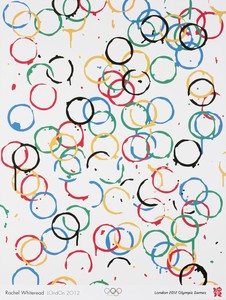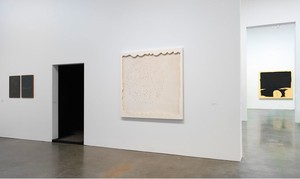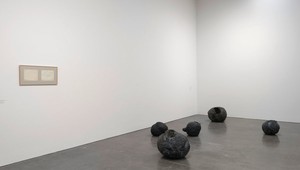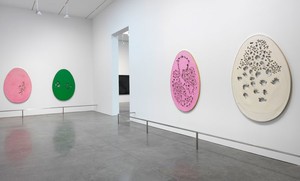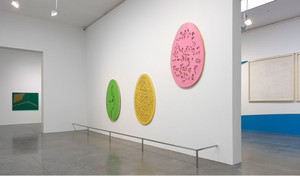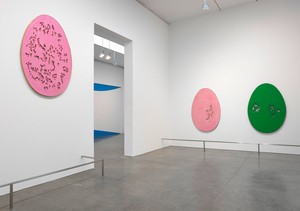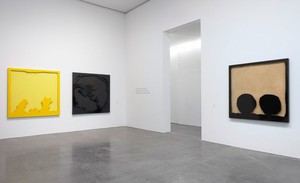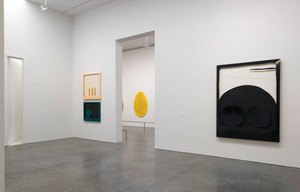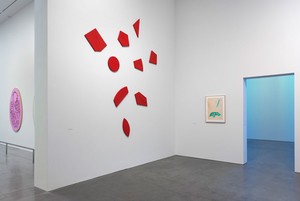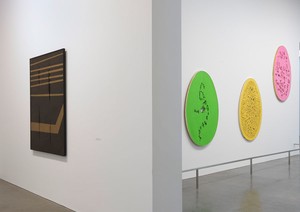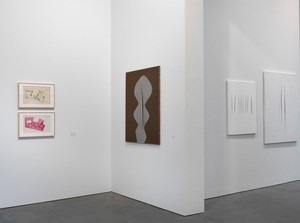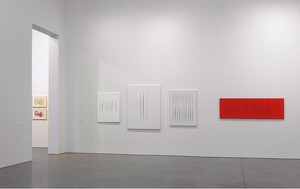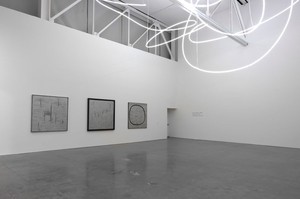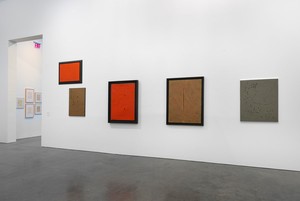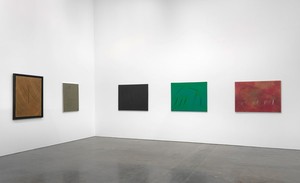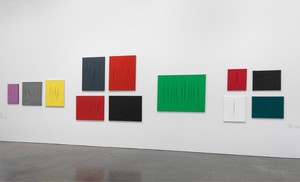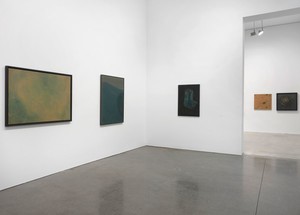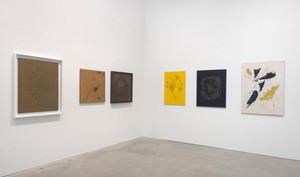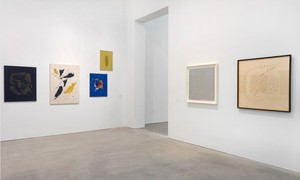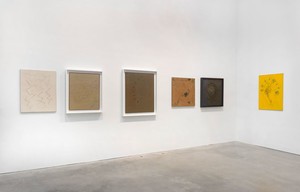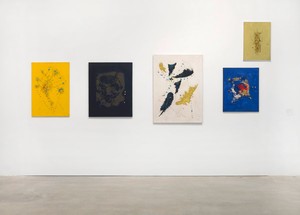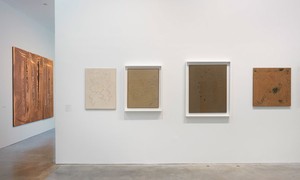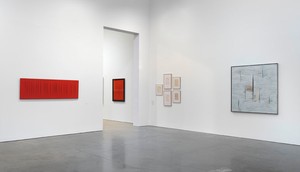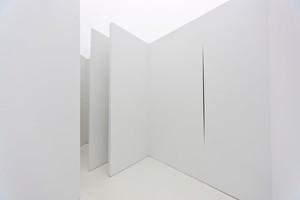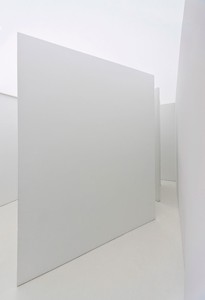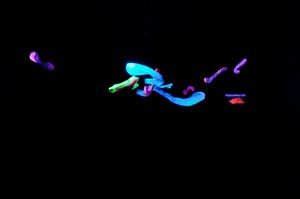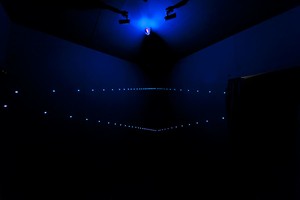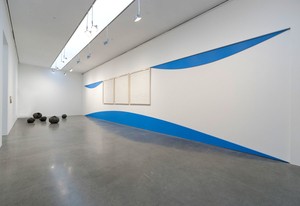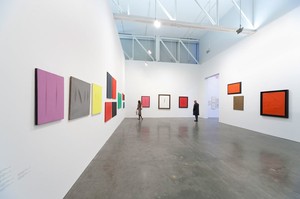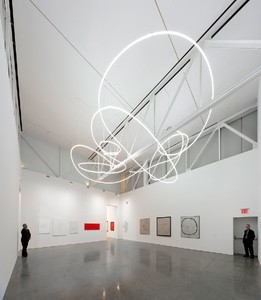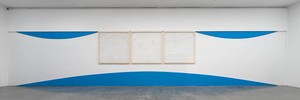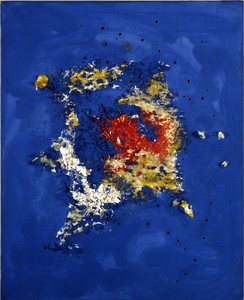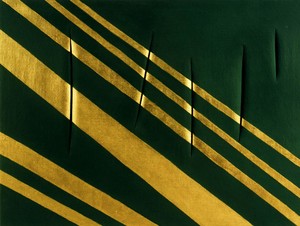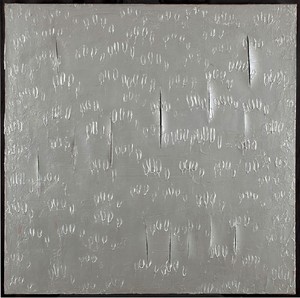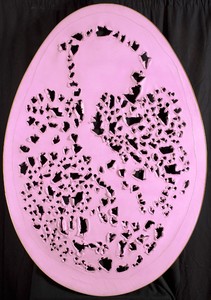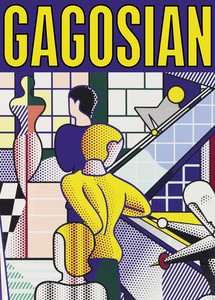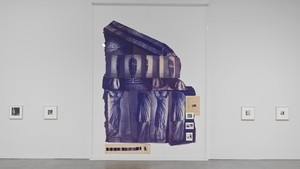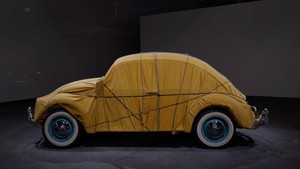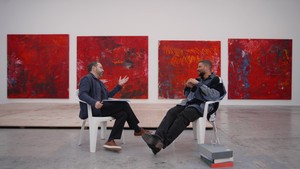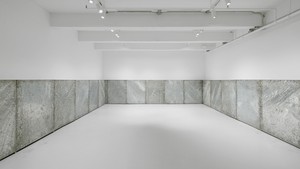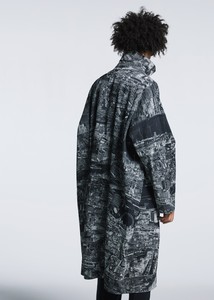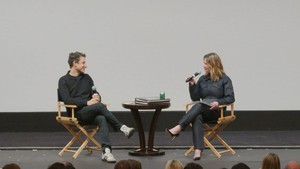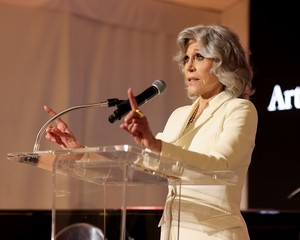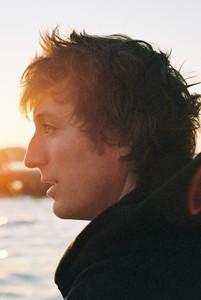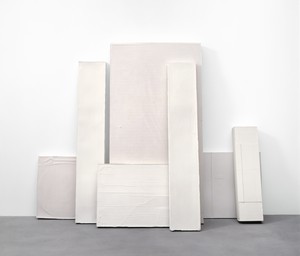Gagosian Gallery is pleased to announce a major and unprecedented survey of the work of Lucio Fontana. Six of his groundbreaking environments, known as Ambienti Spaziali, have been faithfully reconstructed, providing a completely new perspective for the rich and varied retrospective of more than one hundred major works that surrounds them. Curated by Germano Celant, assisted by Gagosian director Valentina Castellani in close collaboration with the Fondazione Lucio Fontana in Milan, the exhibition includes many works that have rarely been seen and reunites important series from public and private collections.
Fontana's fascination for the advancements of science and technology during the twentieth century led him to approach art as a series of investigations into a wide variety of mediums and methods. As a sculptor, he experimented with stone, metals, ceramics, and neon; as a painter he attempted to transcend the confines of the two-dimensional plane. In a series of manifestos, beginning with the Manifesto blanco (White Manifesto) of 1946, Fontana announced his goals for a "spatialist" art, one that could engage technology to achieve an expression of the fourth dimension in a radical new aesthetic idiom that melded the categories of architecture, sculpture, and painting.
A sculptor trained in classical techniques, Fontana was initially known for grand and innovative sculptures produced for trade fairs and exhibitions promoting the ideology of Fascism in Italy. But these early examples already contained a rationalist abstract language that pointed to an awareness of the most daring rationalist architectonic experiments of Edoardo Persico and Giuseppe Terragni
Upon his return to Milan from Argentina in 1947, Fontana found his studio and works completely destroyed in the Allied bombings of Milan. Due to this abrupt tabula rasa, he considered himself to belong rather to the post-war generation of Italian artists: thus the story of his career is, effectively, the story of his last twenty years. In Buenos Aires, with his students at the newly founded Academia of Altamira, Fontana conceived of an art that could reflect the excitement of contemporaneous discoveries in science and physics and thus continue evolving its very means. Inspired by, but surpassing, the language of Futurism, they advocated doing away with the traditional supports of painting and sculpture. With the act of cutting a thinly painted monochromatic canvas with a sharp knife, Fontana exploded the definition—or at least the conventional space—of art. This act challenged the entire history of Western easel painting and led him to the understanding that painting was no longer about illusion contained within the dimensions of a canvas but, rather, a dynamic concept that blended form, color, architectural space, gesture, and light. Thus the concept of spazialismo was born.
